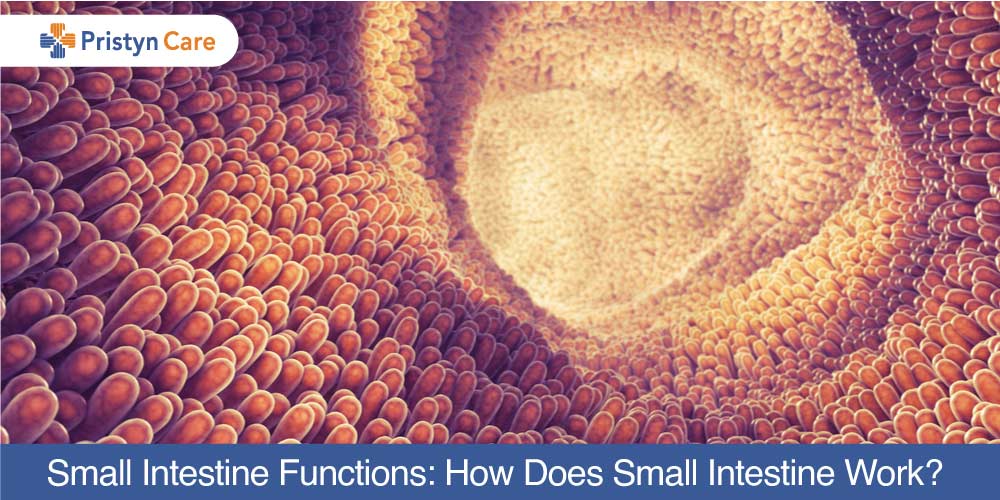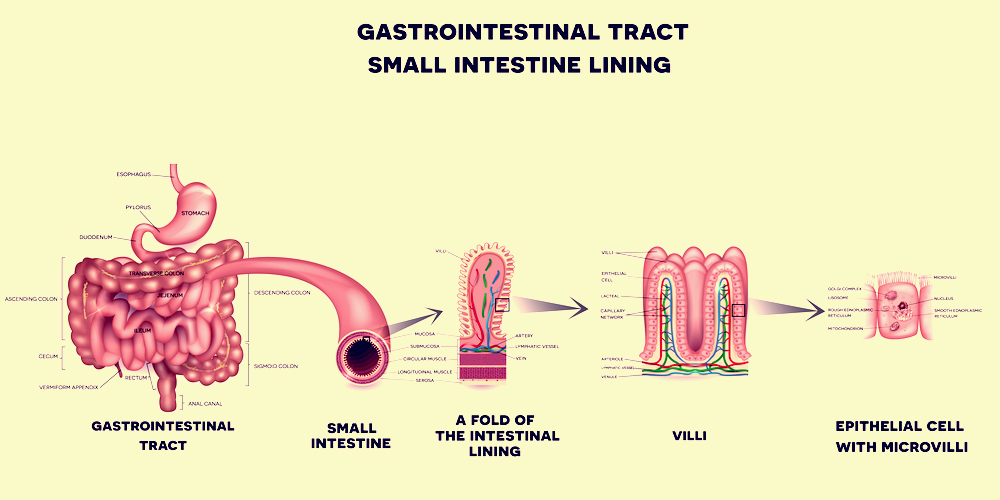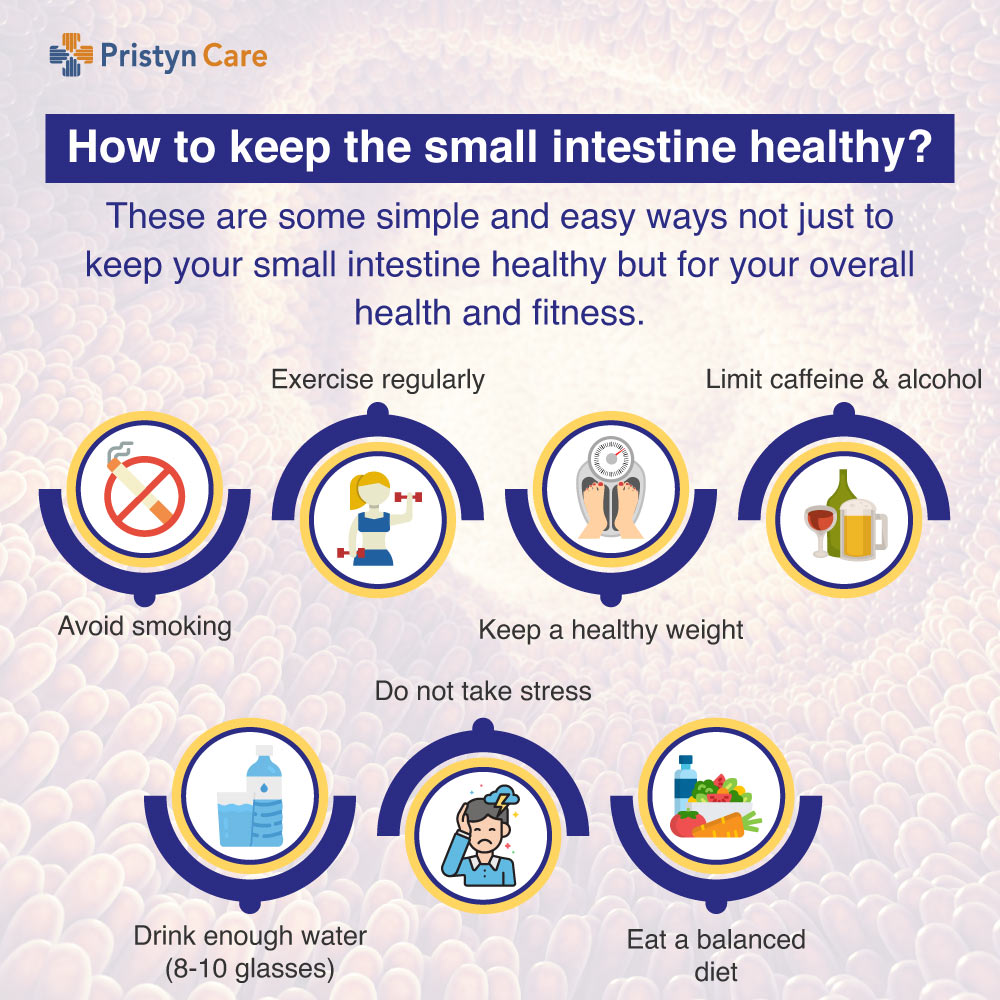
The human intestines are long tubes running from the stomach to the anus. The intestine absorbs the nutrients and water from the food that we eat. The intestine includes a large intestine, small intestine and rectum.
Large intestine is approximately five feet long and three inches in diameter. Large intestine means colon and bowel where the colon absorbs all the water from the wastes and forms stools.
Small intestine almost 20 feet long and one inch in diameter. Most of the digestion takes place in the small intestine vitamin, minerals, fats and water are absorbed in the small intestine.
To understand the anatomy of the small intestine in detail let us go through its role in the body, the work it performs and disorders related to it.
Table of Contents
Parts of the small intestine
To start with, there is lining inside the small intestine that is divided into three sections – duodenum, jejunum, and ileum.
Duodenum:
This is the first and the shortest “C-shaped” section of the small intestine. The semi-digested food passes from the stomach and reaches duodenum via a muscle called pyloric sphincter. The initial part of the duodenum lining is smooth and starts to fold as it passes through. It uses bile secreted from gallbladder and liver to help digest food. Duodenum stores iron from the food.
Jejunum:
After duodenum is jejunum, the middle section of the small intestine. It occupies the left upper portion of the abdomen. It absorbs sugars, amino acids, and fatty acids from the food and transfers it to the third and last section – ileum.
Ileum:
This is the last and the longest section of the small intestine where most of the food nutrients are absorbed. It is in the right side and upper part of the pelvis. Finally, it absorbs vitamins B12 and bile acid and transfers the rest to the large intestine.
Functions of the small intestine
The small intestine absorbs and digests 90% of the food and the rest gets processed collectively in the large intestine and the stomach.
There are two parts of digestion- one is mechanical that involves chewing, grinding, mixing and churning. The other part is the chemical digestion that involves bile juice, enzymes to break the food and absorb the nutrients for the body. So, most of the chemical digestion takes place in the small intestine.
So by the time the food comes to the small intestine, it is already mashed and broken. Now, let us see how different nutrients are absorbed.
Protein digestion
Enzymes such as trypsin and chymotrypsin that are secreted by pancreas, act upon proteins and amino acids to further break the peptides. All this starts when the food enters the stomach and continues till it reaches the large intestine.
Lipid digestion
Enzymes such as lipases that are secreted from the pancreas act on fats and lipids that come from food we eat. This breaks the triglycerides into free fatty acids and monoglycerides. It is helped by bile salts secreted by the liver and the gallbladder. The fatty triglycerides are insoluble in water while lipase is. The bile salts hold the triglycerides in the watery environment until the lipase can break them into the smaller parts that can enter the intestine for absorption.
Carbohydrate digestion
Carbohydrates break down into sugar and glucose. Some of them pass onto the large intestine undigested and further break down into the intestinal bacteria.
How food is absorbed in the small intestine?
Now, your small intestine receives between six to twelve liters of liquid (food that we eat after processing in the stomach) everyday. It carries out most of the digestion by absorbing almost all of the nutrients that you get from food into the bloodstream. The walls of the small intestine make digestive juices that work together with enzymes from the liver and pancreas for further processing.
The substances absorbed in the small intestine are water, electrolyte, vitamins and minerals.

How is the small intestine able to digest so much?
It looks surprising the way this narrow organ can absorb so much. The absorption surface area of the small intestine is 250 square meters. The reason why the small intestine is able to digest so much are:
- Mucosal fold: The inner layer of the small intestine has several circular folds that regulate the flow of the digested food along with increasing the surface area.
- Villi: These folds form several small projections that stick out into the open space inside the small intestine. These projections are covered with cells that help absorb nutrients from the food that passes through.
- Microvilli: The cells on the villi are covered with hairlike structures known as microvilli. This further increases the surface area of each individual cell allowing them to absorb more and more nutrients.
Then what is the work of the large intestine?
You must be thinking then what does the large intestine do? Well, the purpose of the large intestine is to absorb water and salts from the processed food that has not been digested, and get rid of any waste products that are left.
The leftover mainly includes fiber, salt, bile pigments (that give color to the stools), dead cells from the small intestine and water.
Diseases and disorders of the small intestine
- Bleeding
- Celiac Disease
- Crohn’s Disease
- Infections
- Intestinal Cancer
- Intestinal Obstruction
- Irritable Bowel Syndrome (IBS)
- Ulcers, such as peptic ulcer
How to keep the small intestine healthy?
There are different ways to promote small intestine health along with the complete gastrointestinal tract.

Above all, along with these preventive measures, it is important to get a regular health checkup for any gastro-related abnormalities; especially if you have any family history. Even natural probiotics are healthy for the small intestine occasionally. But consult a doctor to avoid any side-effects and get the right advice.
Also Read: Know About Bowel Obstrution
Also Read: Food that Ease Evacuation







